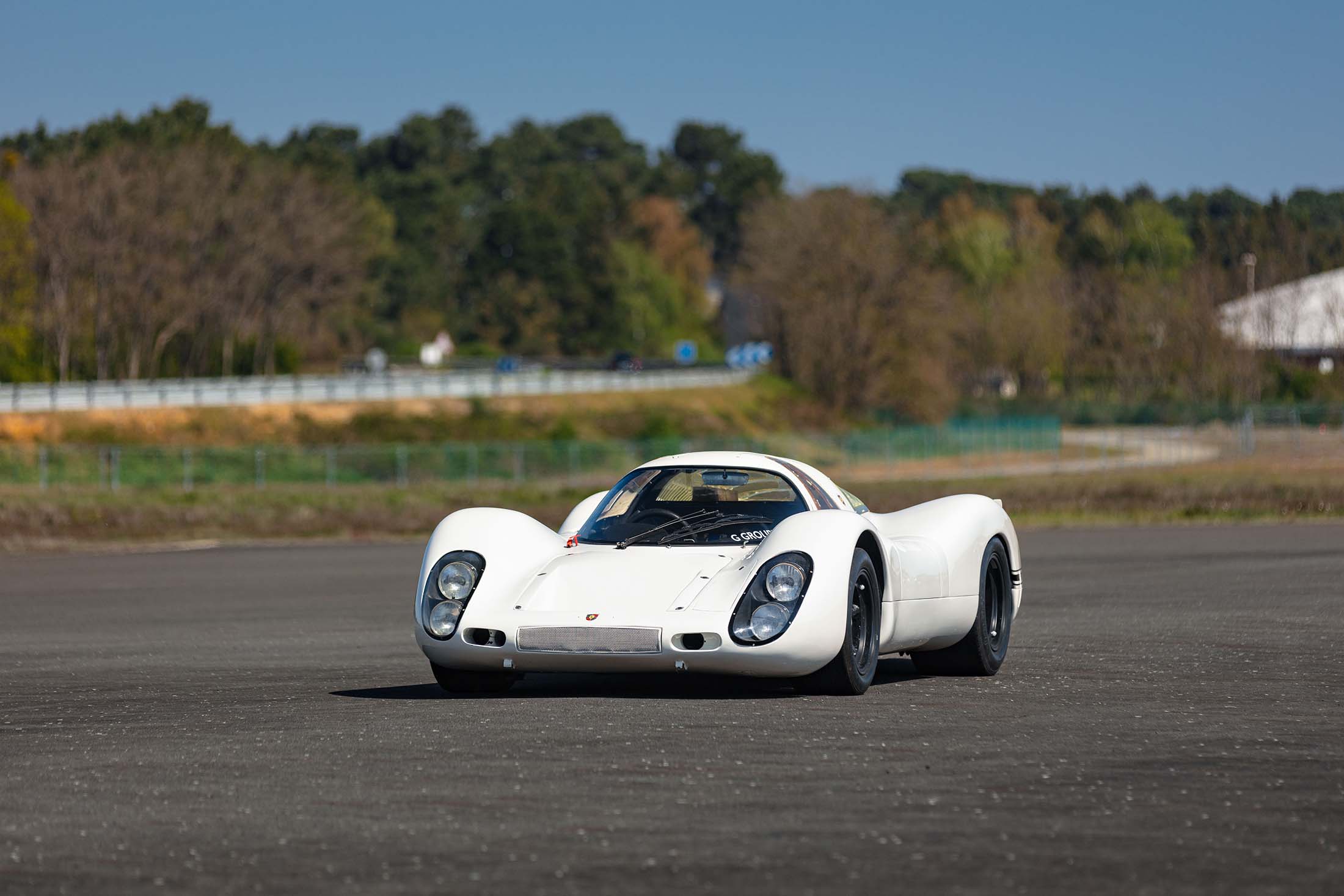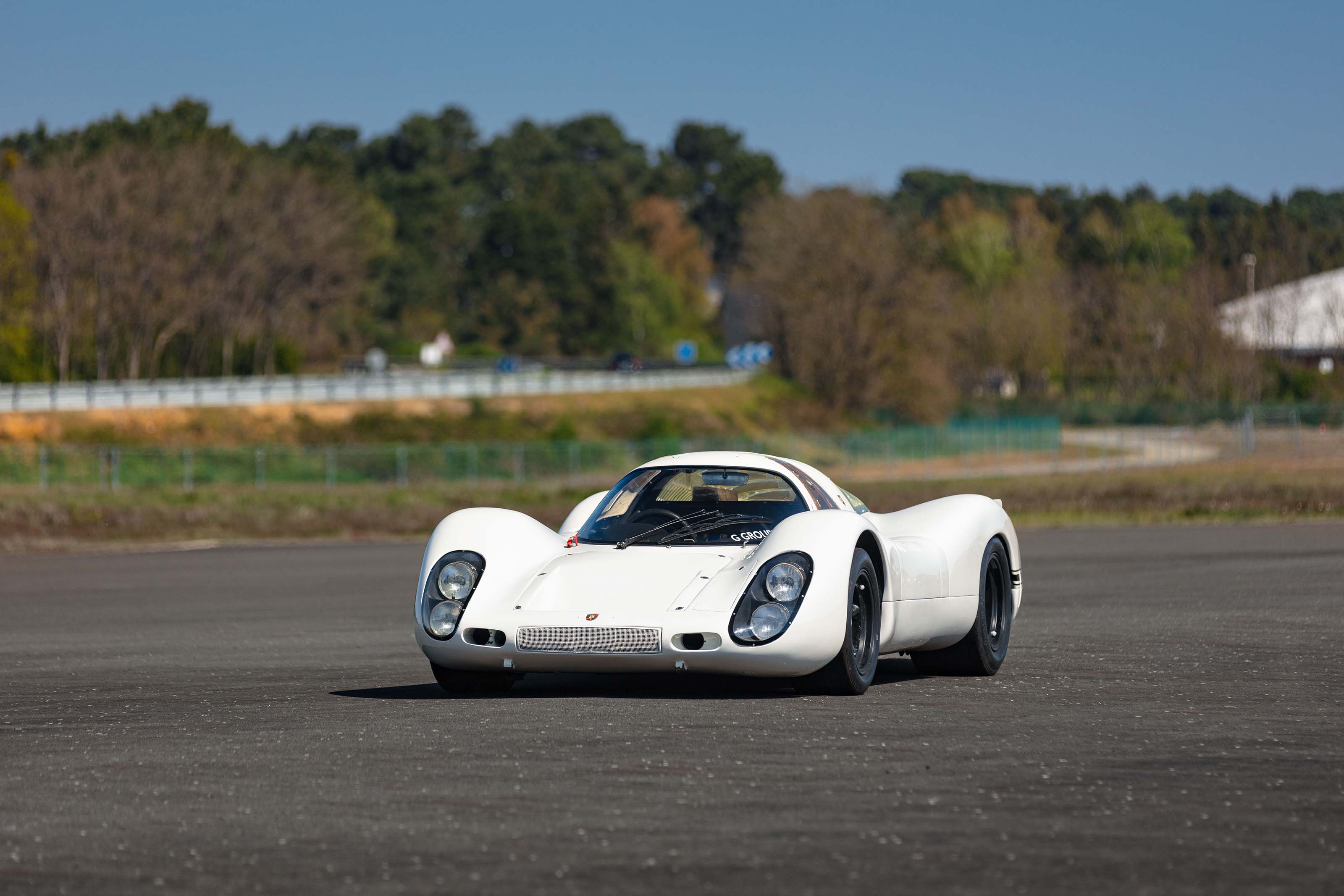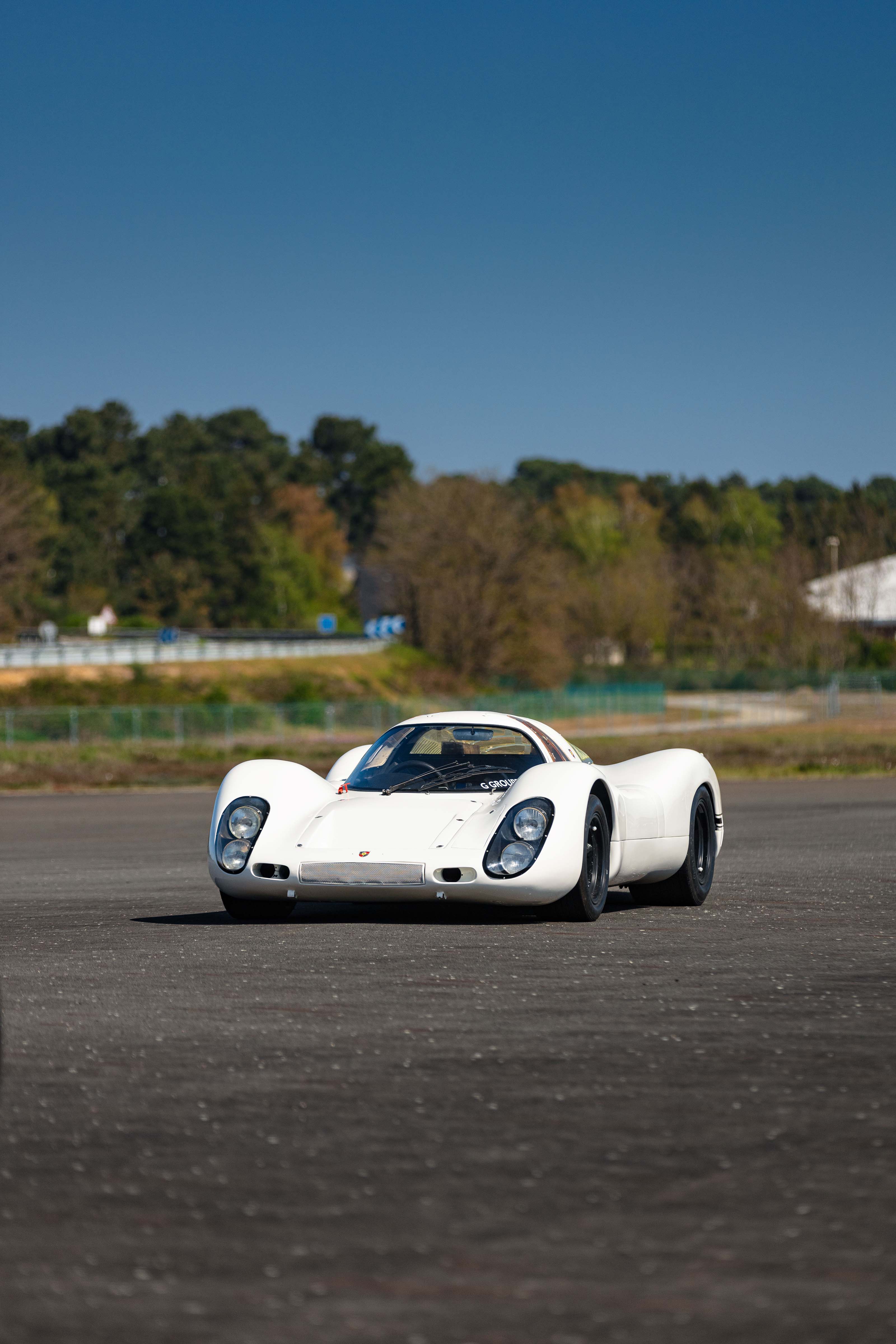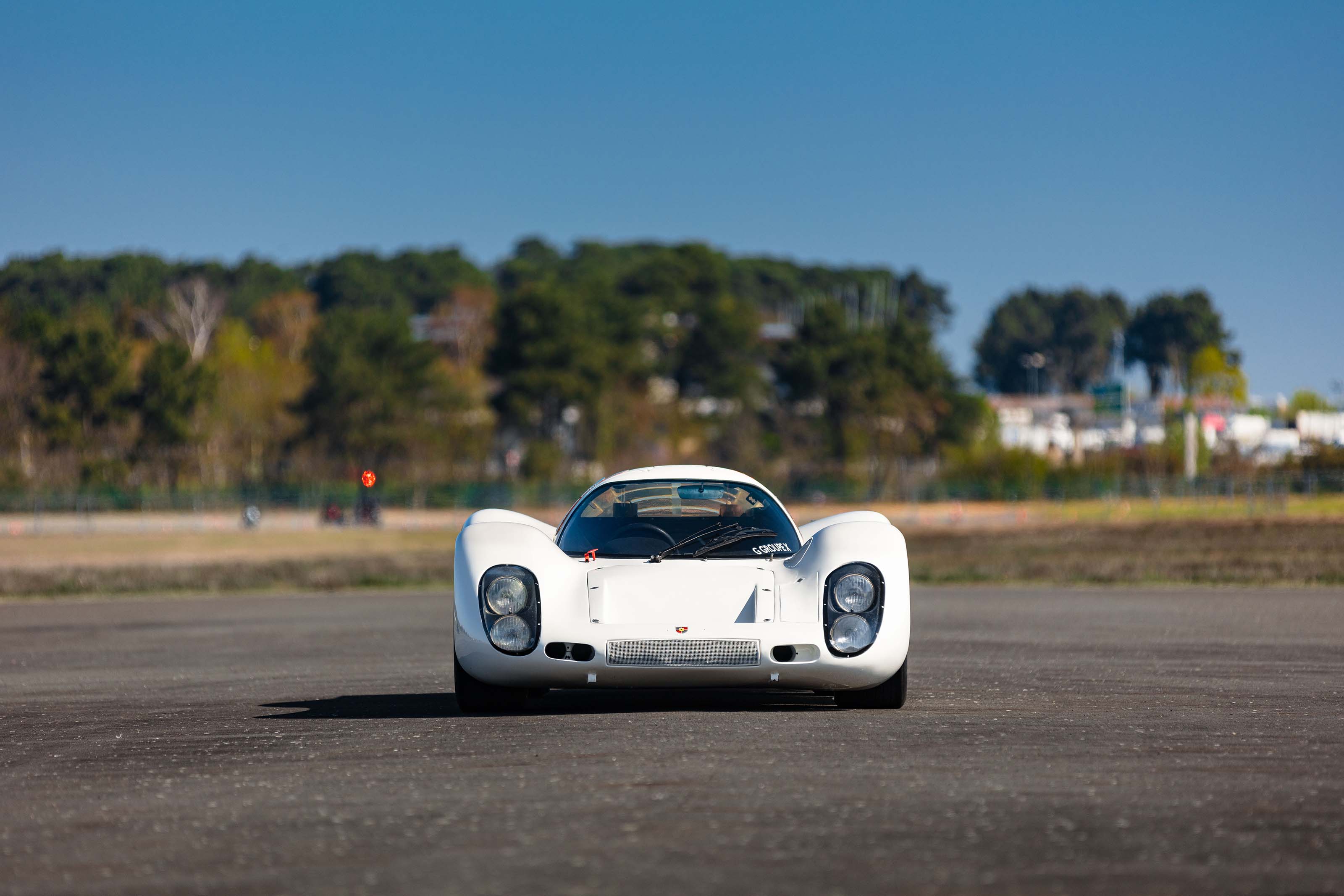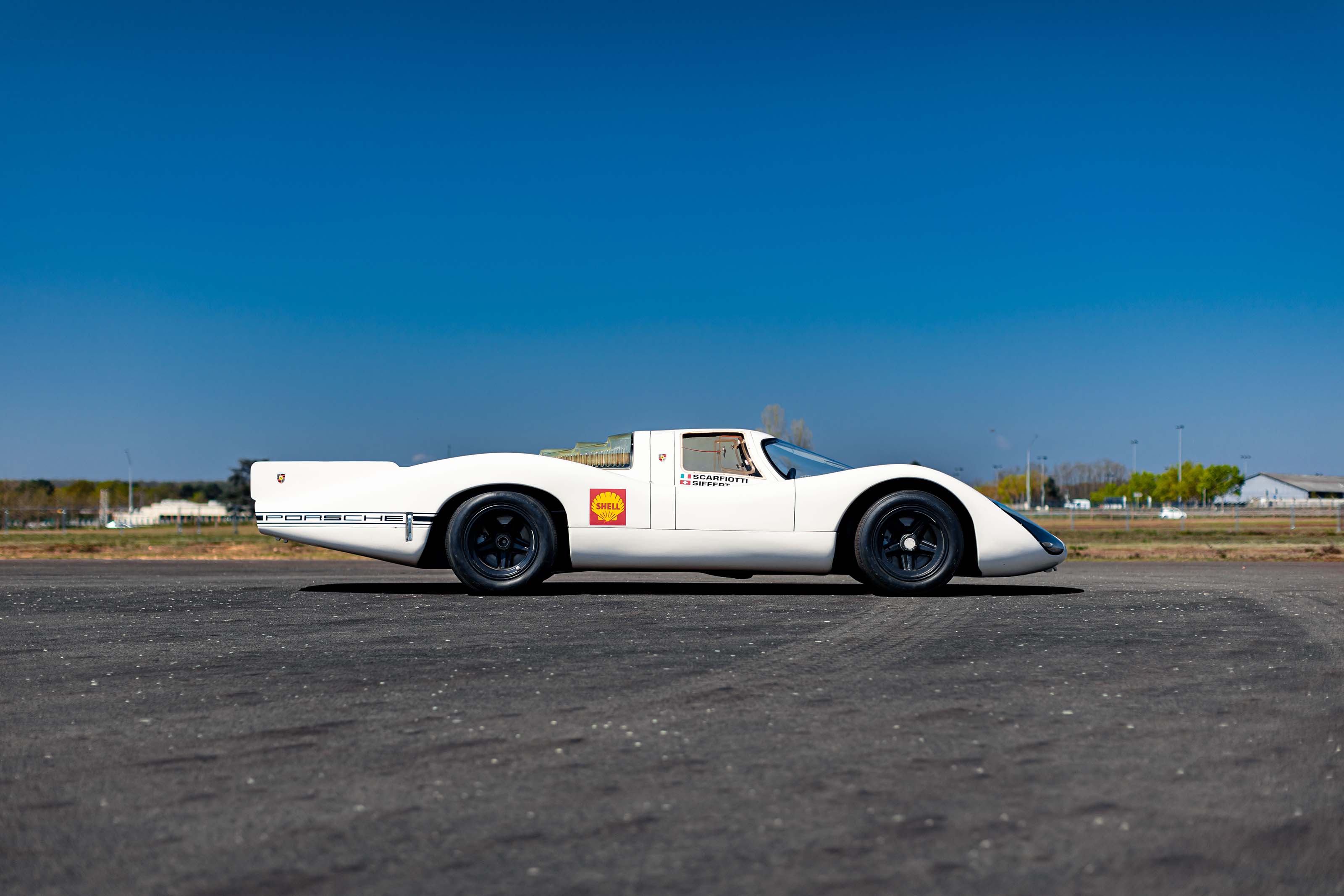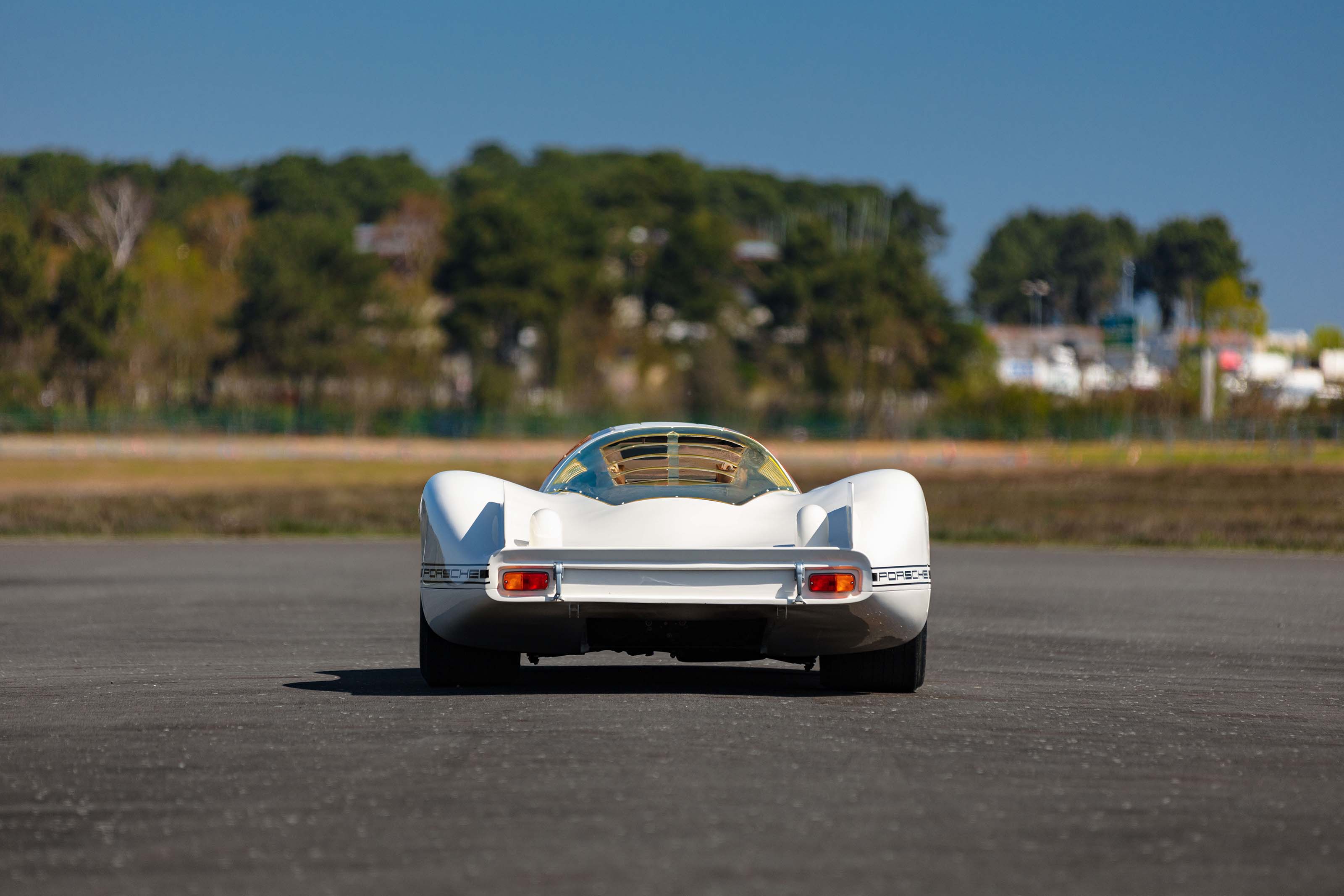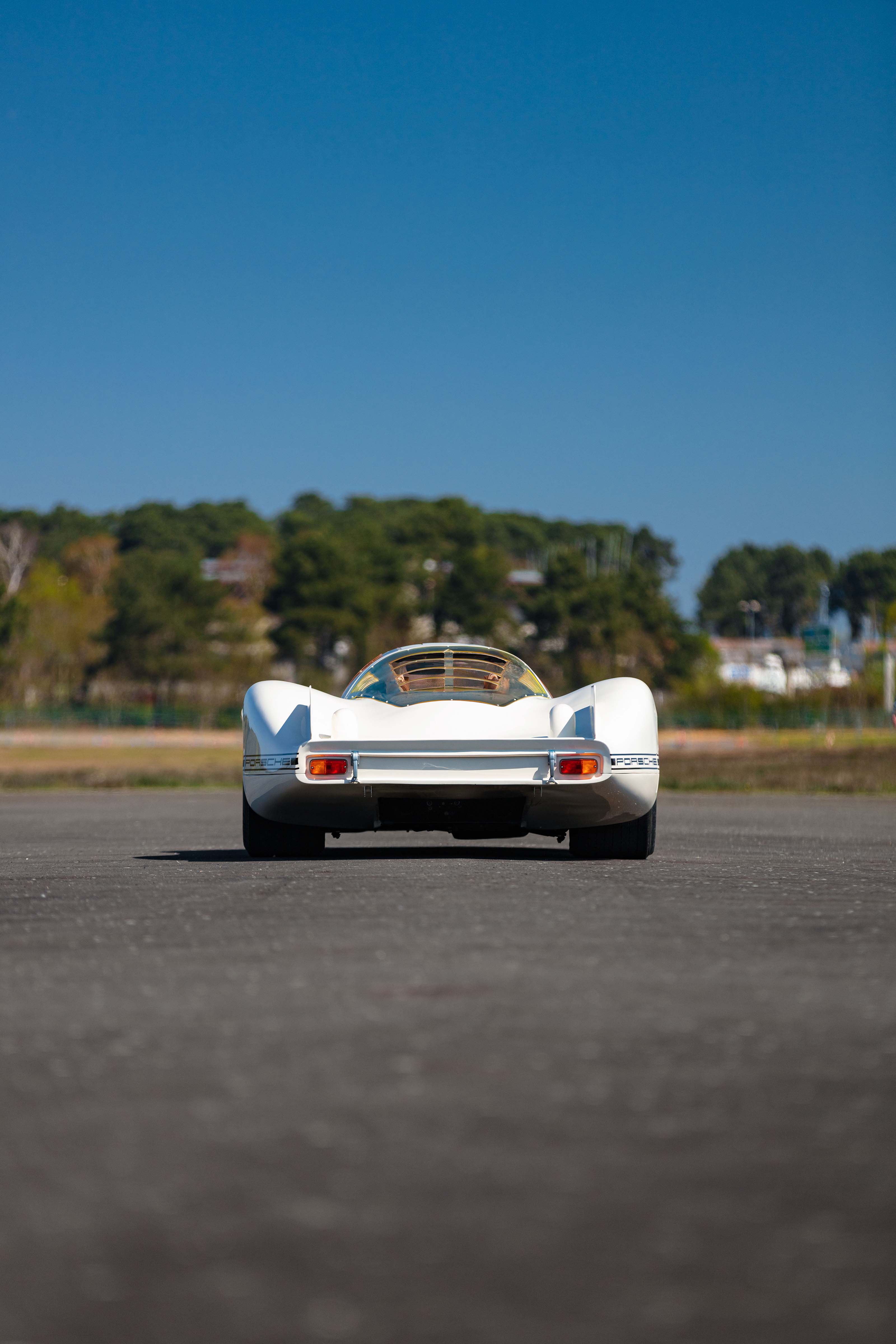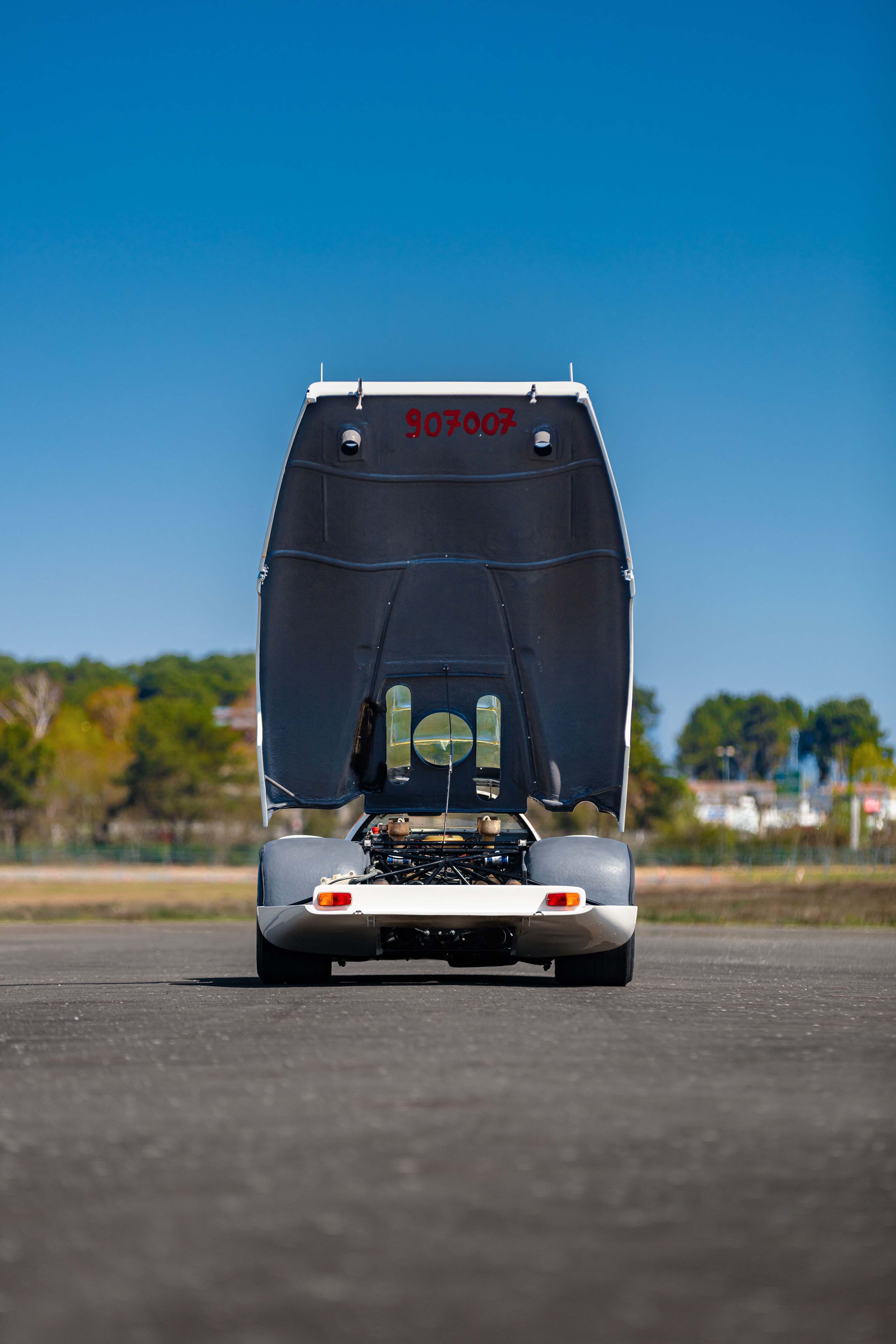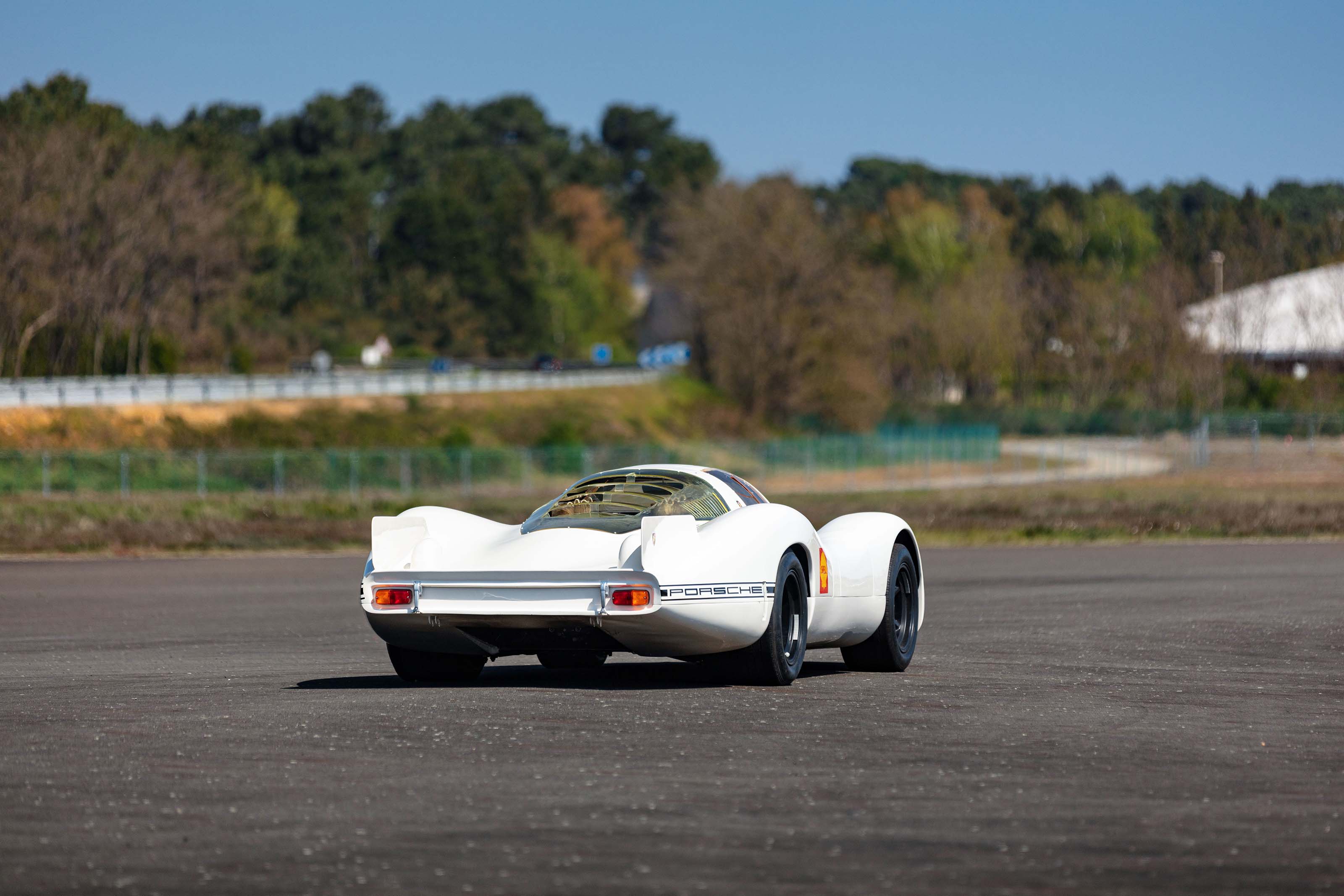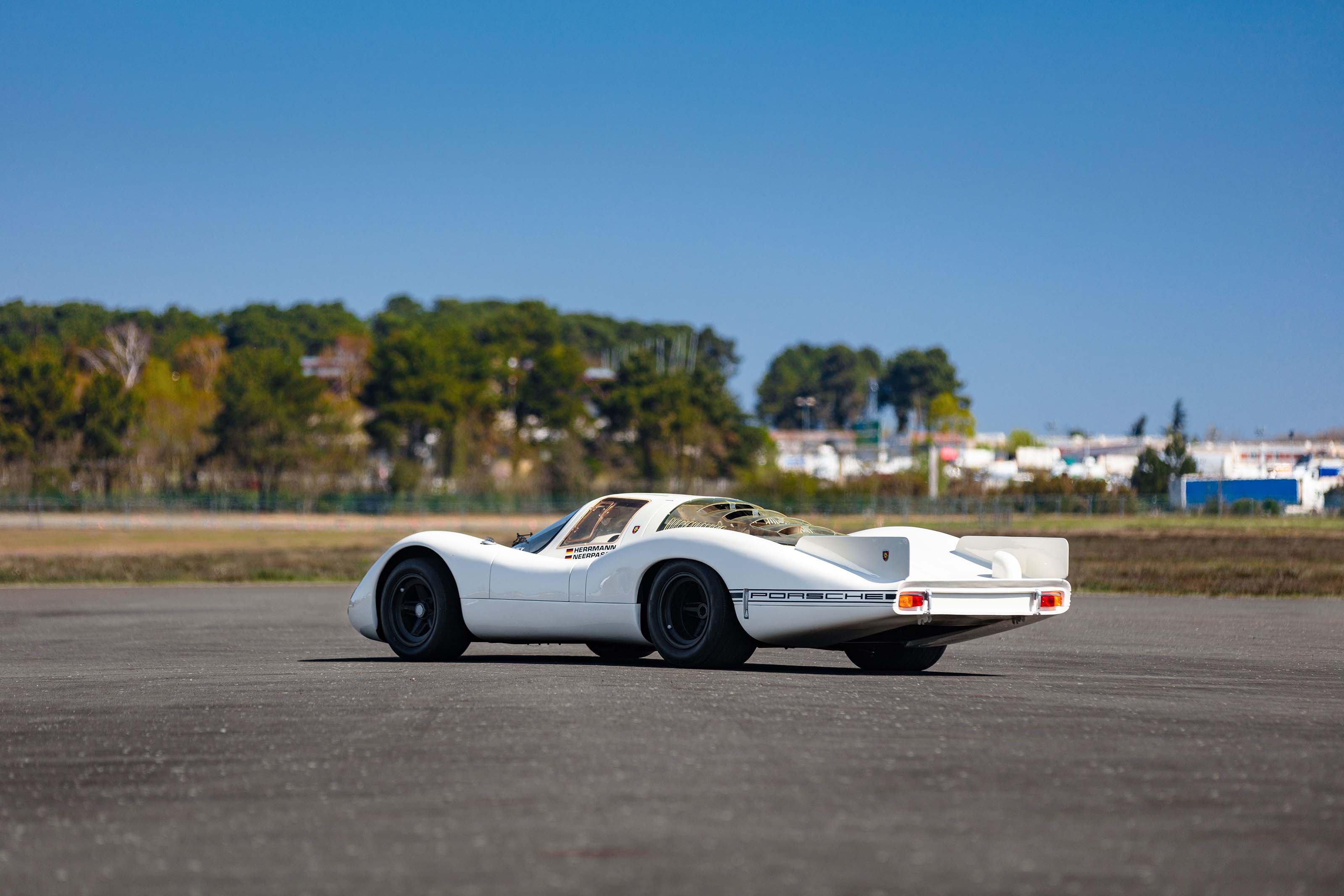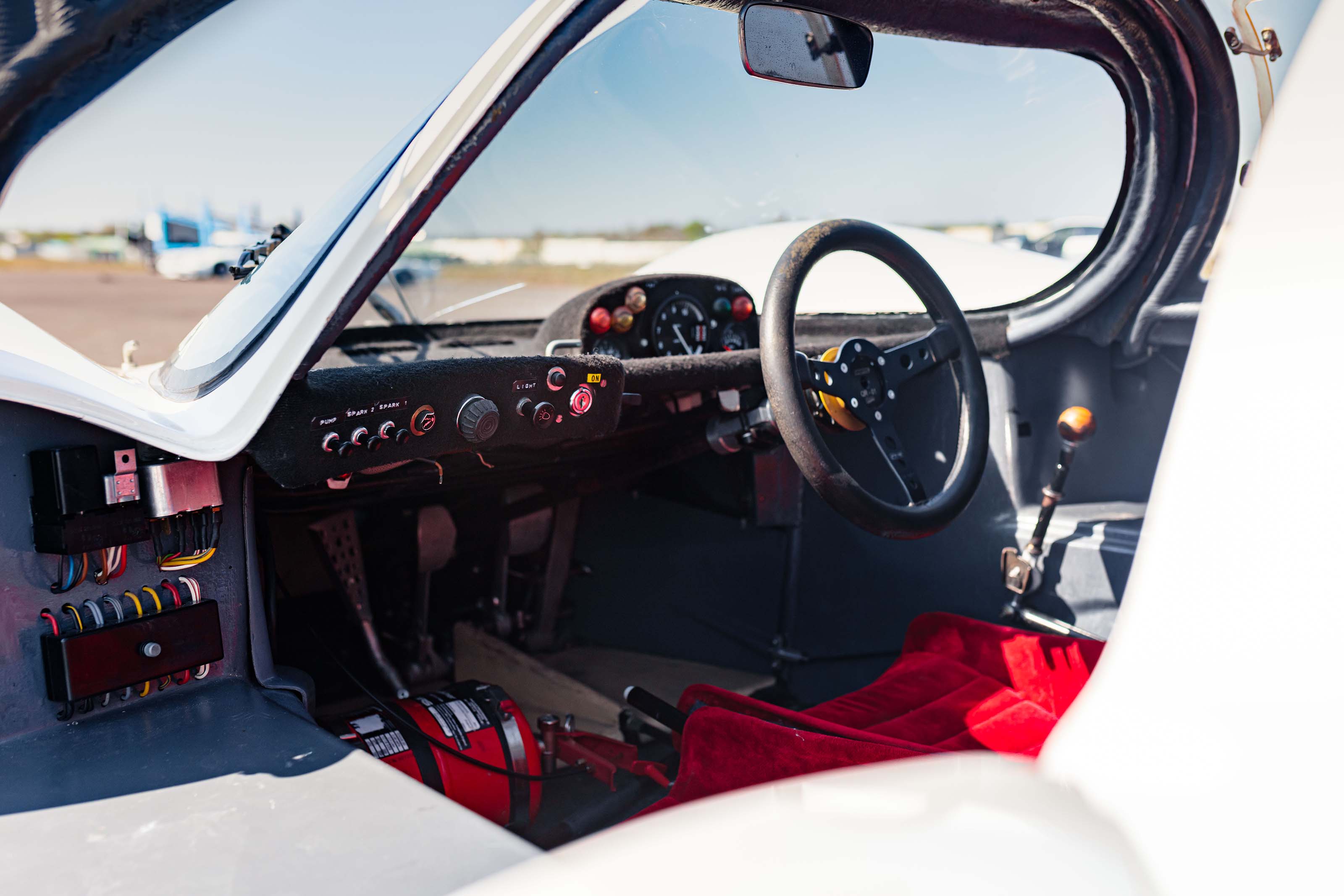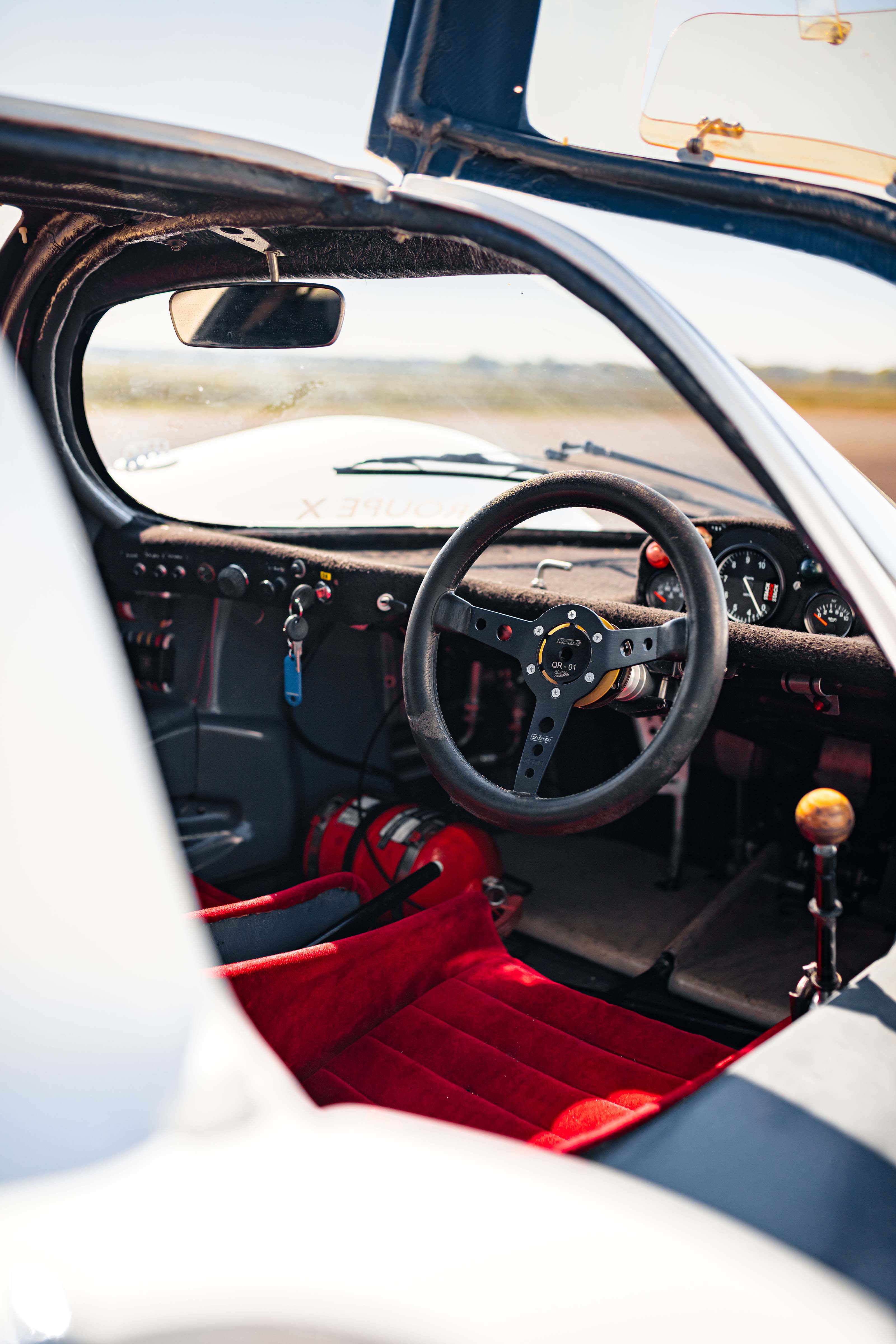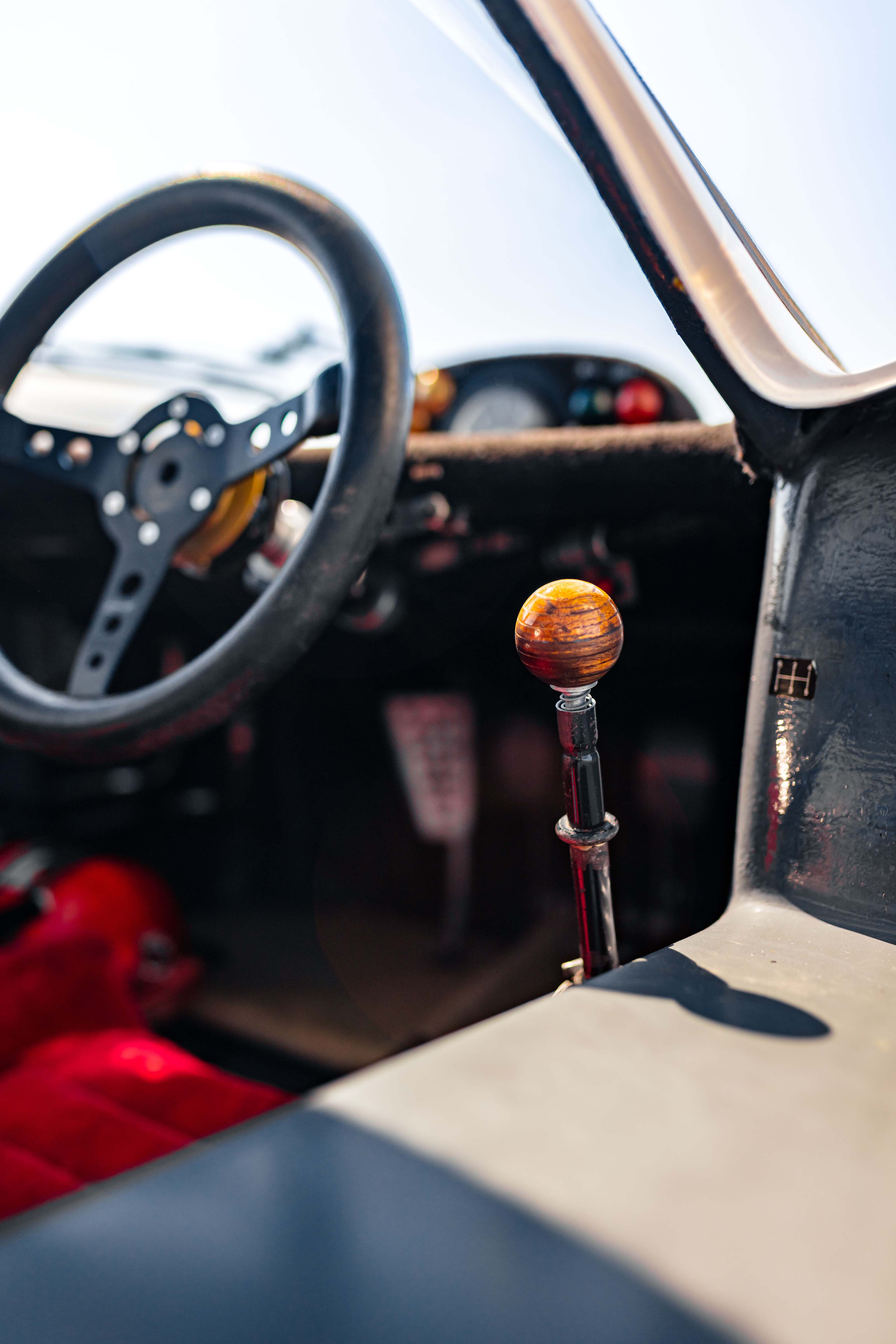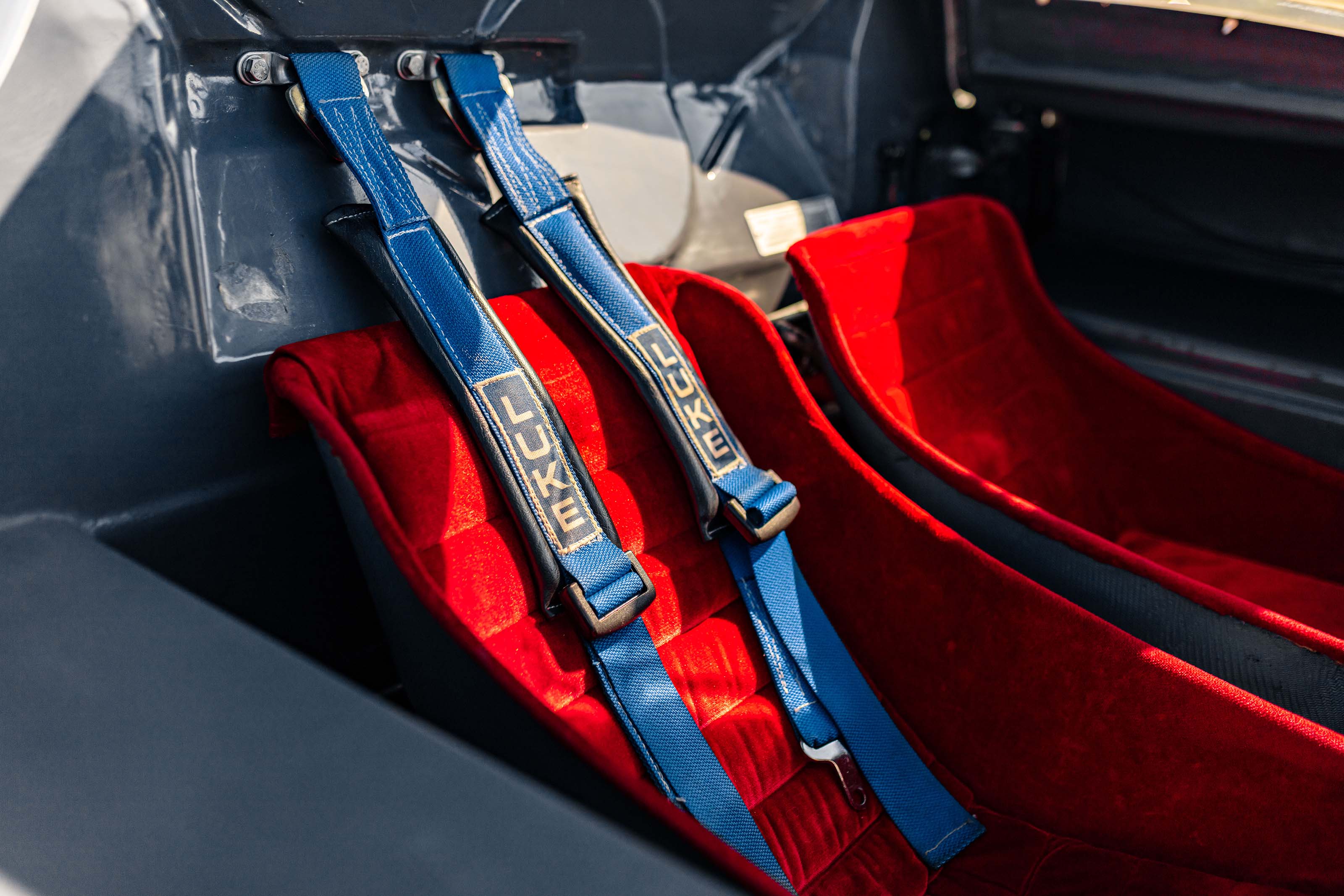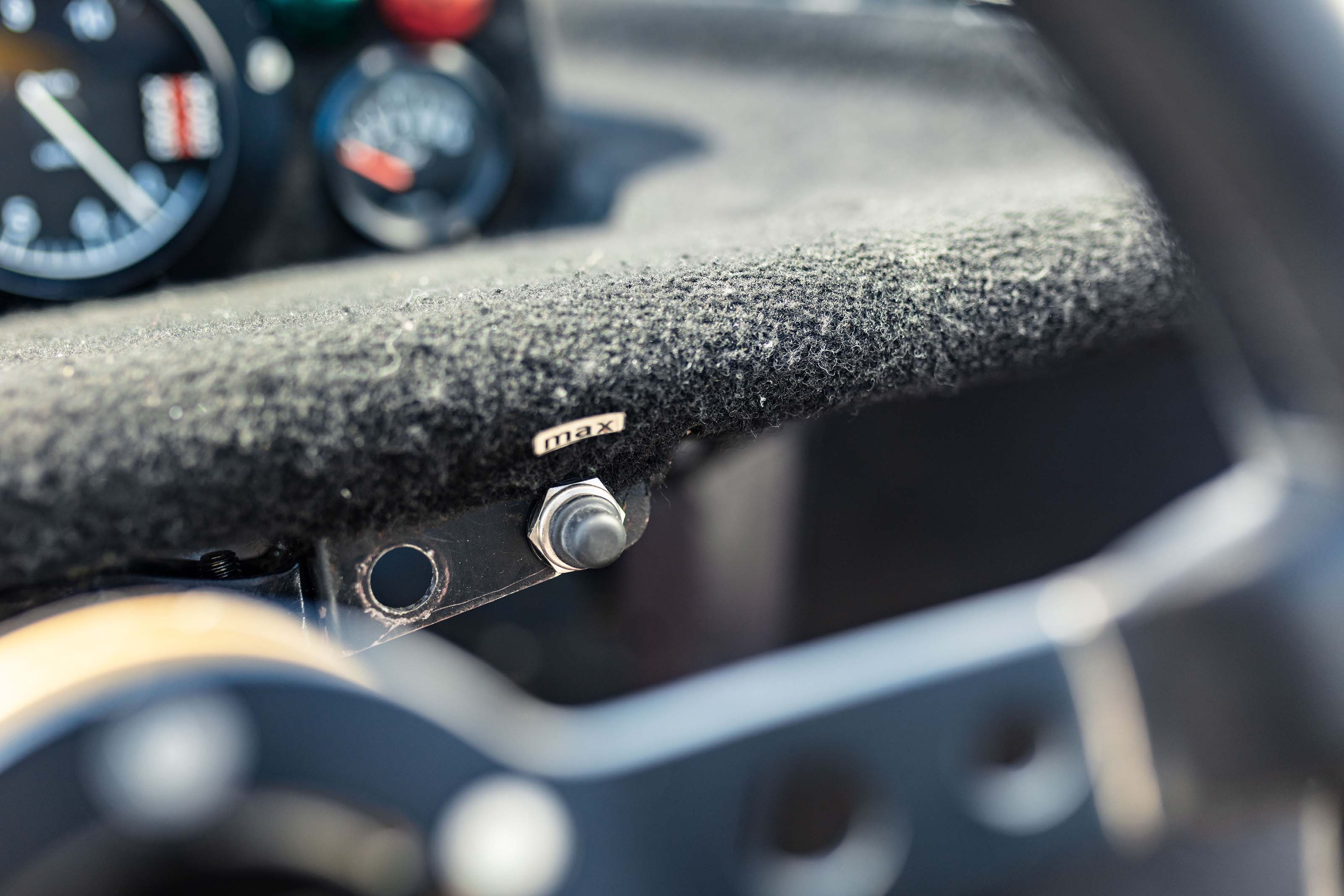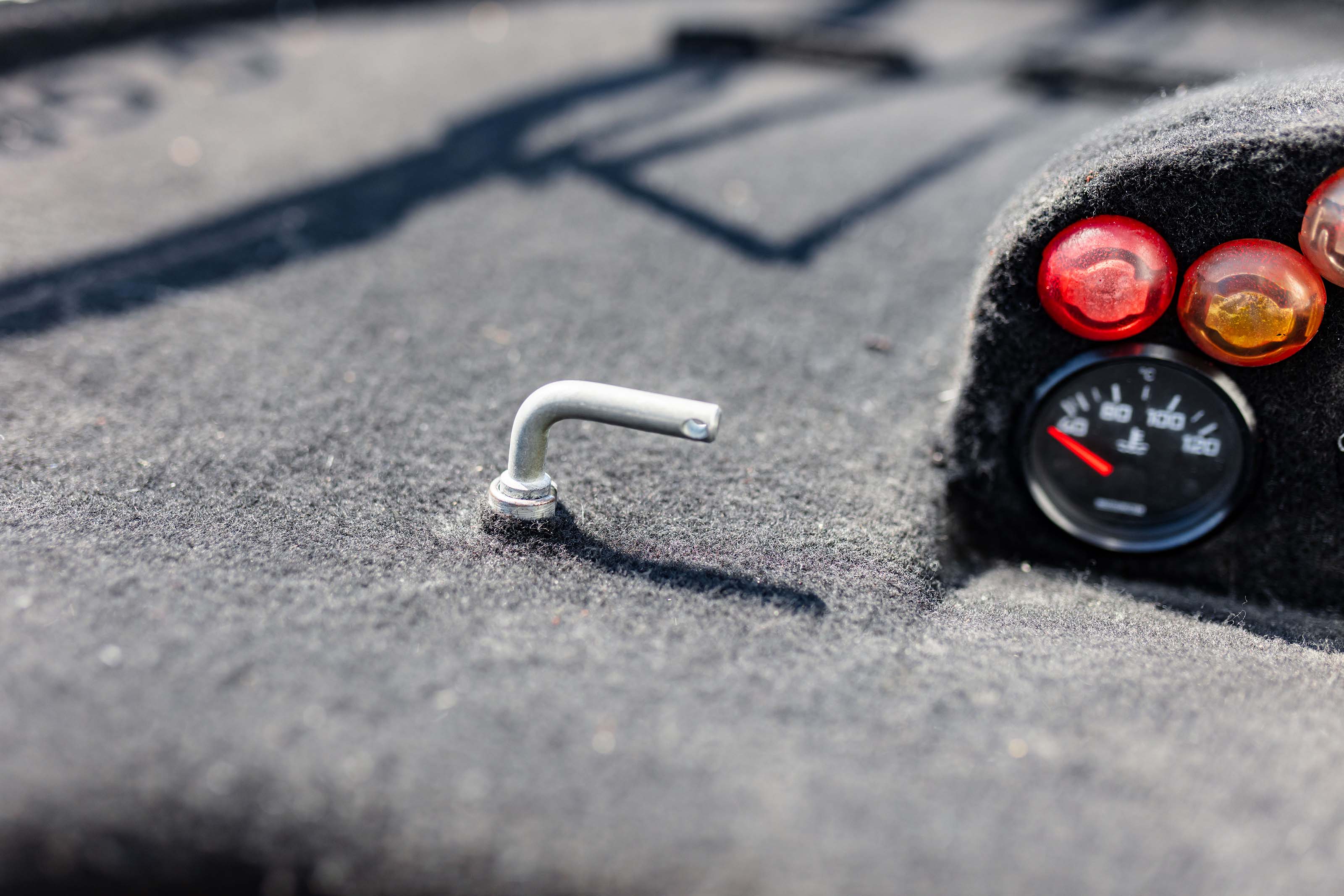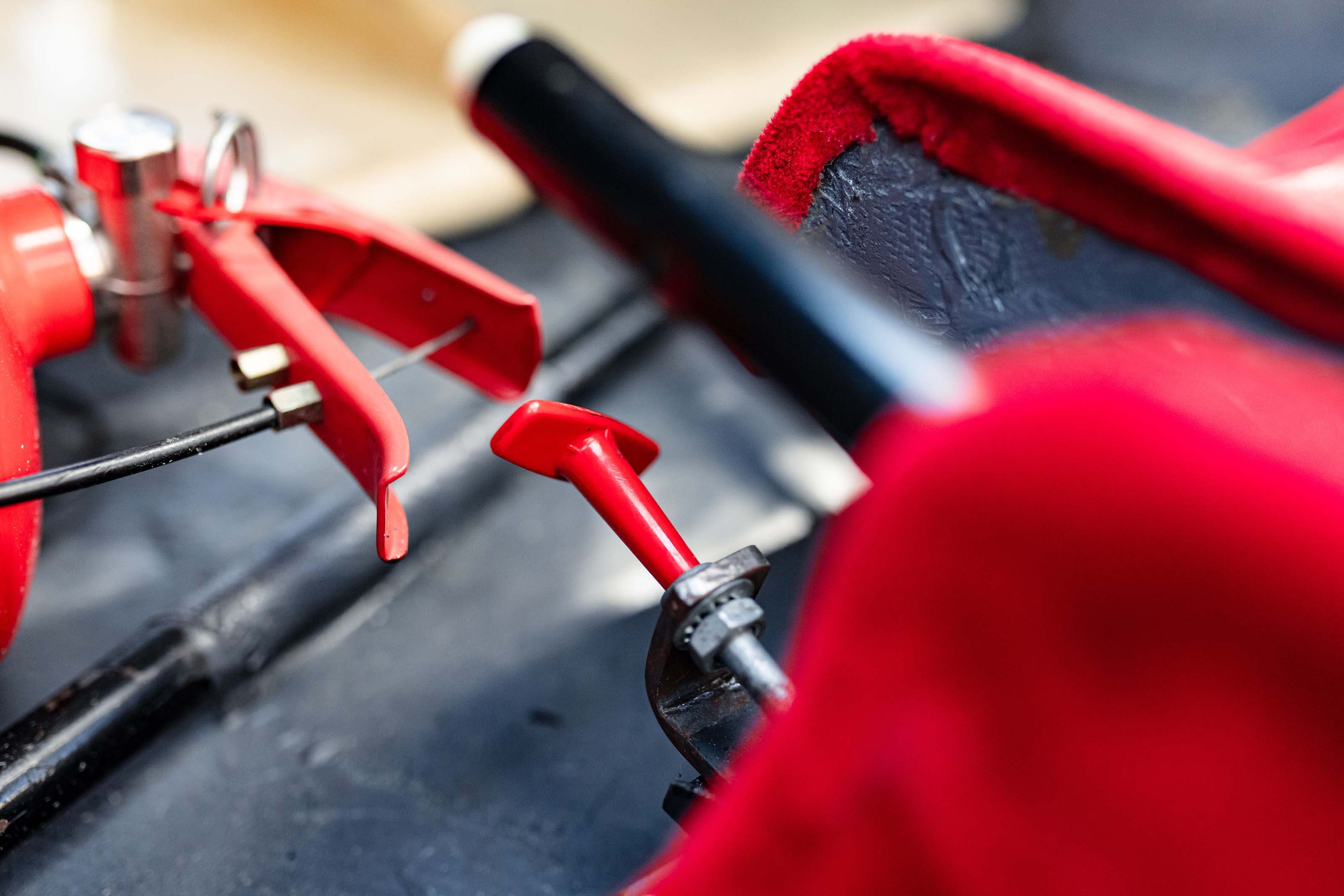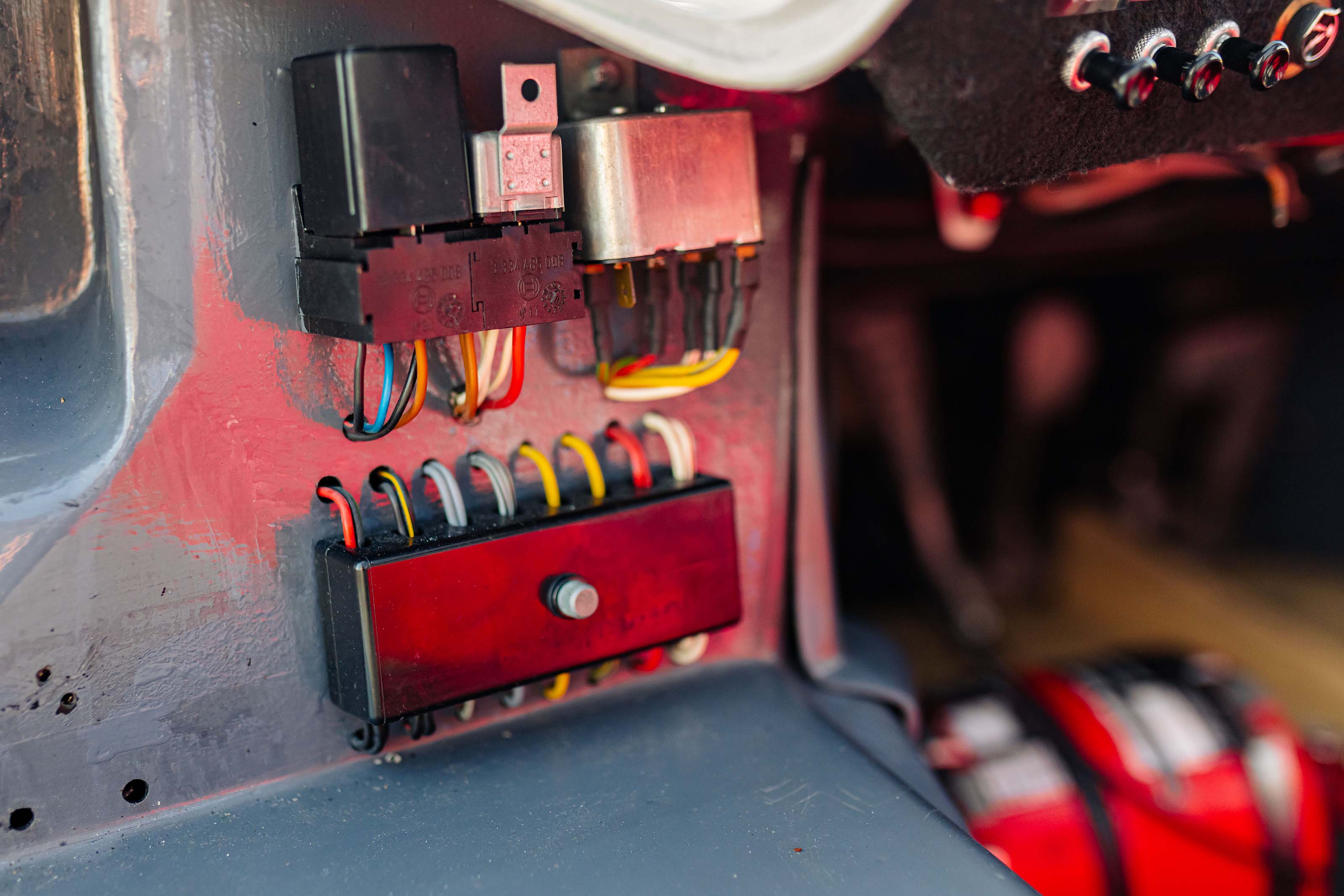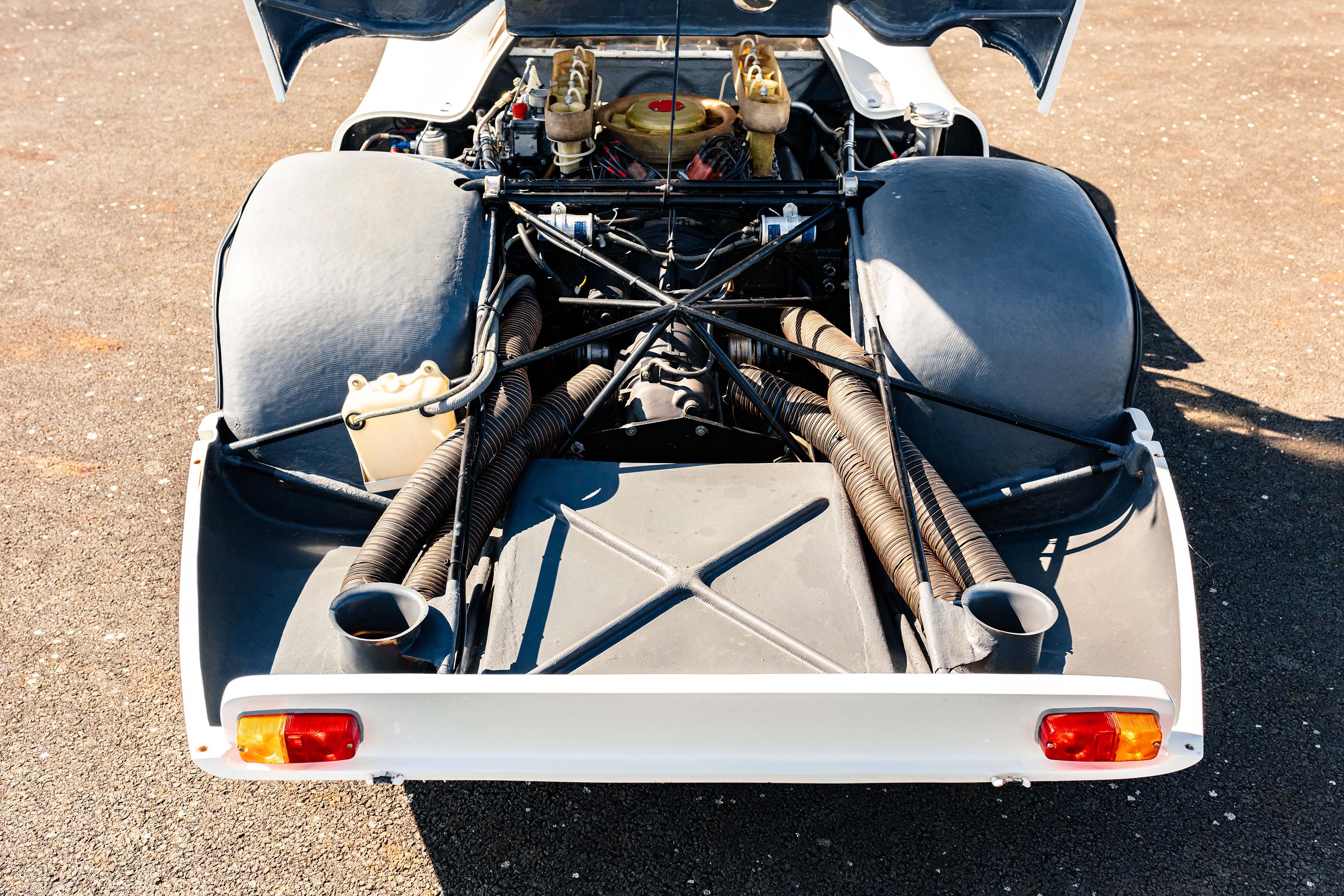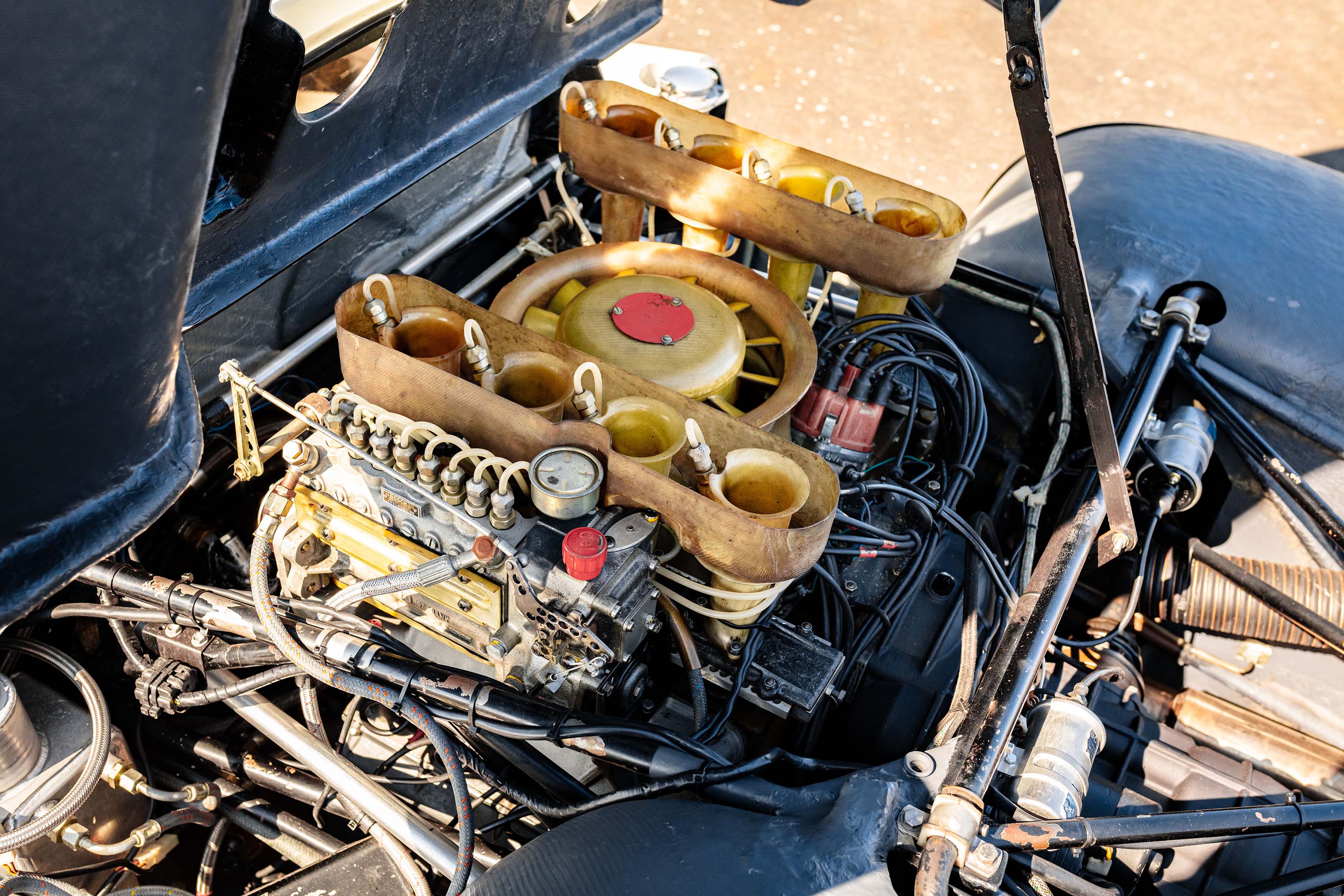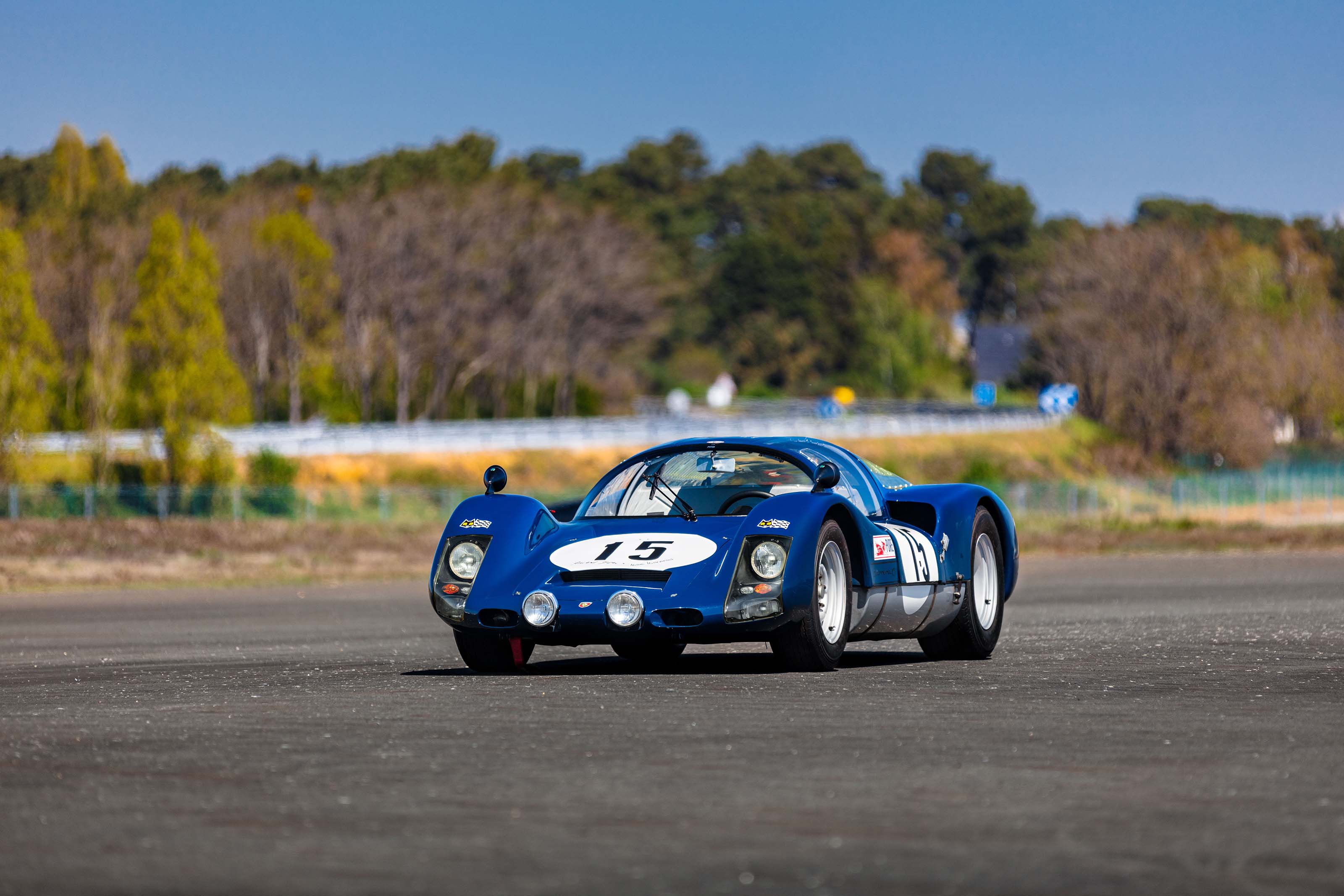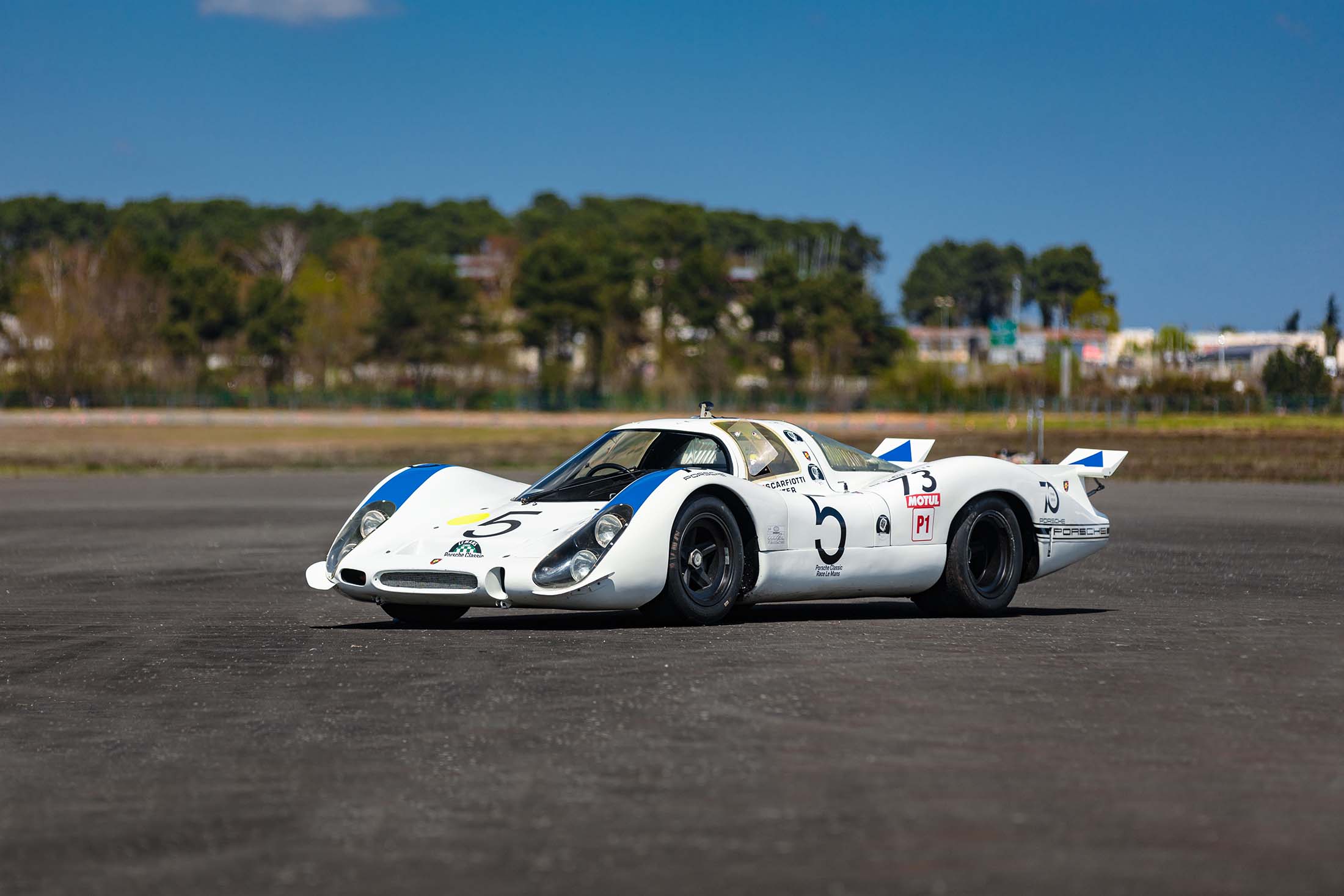| Year | | | 1967 |
| Brand | | | Porsche |
| Model | | | 907 |
| Version | | | K modifiée LH |
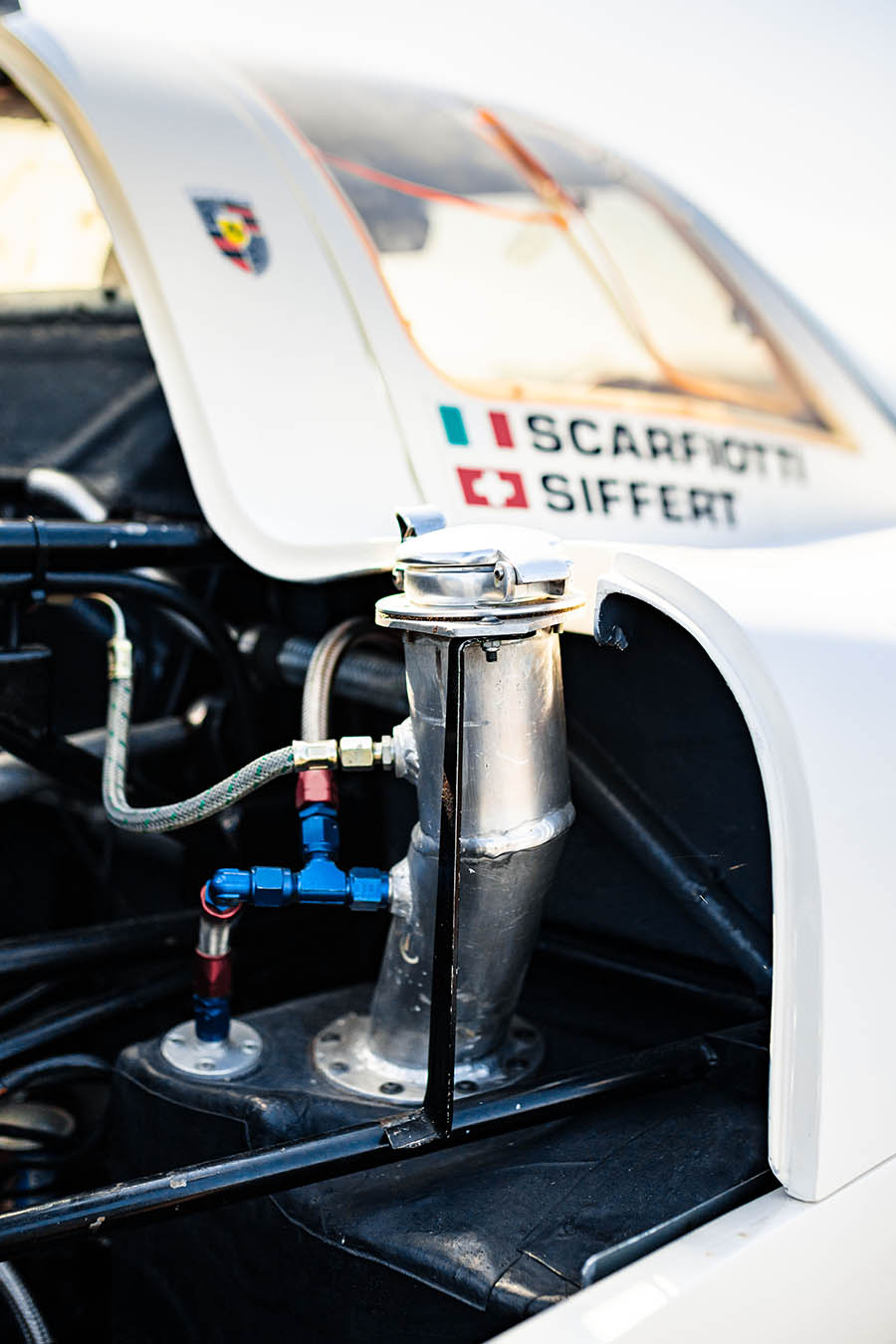
CHASSIS N° 907-007
ENGINE N° 907028
GEARBOX N° CS/907
COMPETITION CAR
WITHOUT A ROAD TITLE
An eight-cylinder work of art
Factory car, the first 907 with an 8-cylinder engine (771)
Finished 4th in the 1967 6 Hours of Brands Hatch in LH version
The only 907 with a short body transformed into a specific long-tail by Porsche
A long-tail design that is authentic, rare, and performance-oriented
Fully documented and prestigious ownership chain
Car has been previously restored to a high-quality standard, all documentation provided
The 907 represents a significant milestone in Porsche’s path towards absolute dominance in the world championship of manufacturers, building upon the achievements of its predecessors, the 906 and 910. This remarkable progression eventually materialized in the crowning glory of a world title in 1969 with the iconic 908, solidifying Porsche’s unrivaled position in the motorsport realm.
During the 1960s, the pursuit of supremacy on the racing circuit became an indispensable pursuit for the most esteemed automobile manufacturers, engaging in fierce competition within the realm of the world sports car/endurance championship. Accomplished engineers, skilled technicians, and adept engine builders graced the hallowed tracks of renowned circuits such as Daytona, the Nürburgring, and, of course, Le Mans. Amidst this backdrop, a relentless pursuit of technical advancements unfolds, for in the realm of racing, the value of crossing the finish line ahead of all others knows no bounds. These relentless innovations give birth to a lineage of legendary racing machines, etching their names indelibly in the annals of automotive history. As the circuits unfolded, the rivalry between the GT40 and the 330 P4 escalated into an intense and brutal contest of skill and will. However, the venerable German manufacturer, Porsche, too, nurtured dreams of greatness, directing its unwavering determination towards clinching the ultimate race, the most prestigious and arguably the most arduous: the illustrious 24 Hours of Le Mans. It was within the hallowed grounds of the 1967 edition of this iconic event that Porsche presented their prototype paragon: the 907.
This vehicle is intended to succeed the illustrious Porsche 910, adorned with numerous triumphs, and finally surpass the American and Italian manufacturers whose incredibly powerful engines have relentlessly claimed victory after victory on the circuit. Speculation runs rife about potential changes in the rulebook that would limit the power of Sport Prototypes, a development that would favor Porsche, who had been assigned the rôle of runner-up in recent years. Meanwhile, drawing upon their expertise in the field, the Stuttgart-based manufacturer relies on what they do best: a lightweight and efficient mechanical system combined with extraordinary aerodynamics.
The 907 is meticulously designed in view of winning a Le Mans and leaving nothing to chance. While there may not be any major outward differences between the 910 and the 907, the latter boasts enhanced aerodynamics, showcasing pronounced front curves that allow for superior air penetration. In fact, it holds the distinction of being the Porsche with the most exceptional coefficient of drag (Cx) in the brand’s history on the Sarthe circuit, coupled with an elegantly elongated silhouette. The car is notably equipped with a new long-tail body («Lang Heck»), reducing drag and enhancing stability at high speeds, specifically engineered to master the treacherous Hunaudières straight. This sleek design has at its heart a 2.0L flat-six engine (Type 901) from the 910, generating 220 horsepower. The power is harnessed by a tubular steel monocoque chassis, artfully designed to keep the car’s weight below 600 kilograms, with ventilated disc brakes reigning in its momentum at the front.
These technological refinements make the 907 the first Porsche capable of surpassing the 300 kilometers per hour mark and competing with rivals equipped with significantly greater power. Aside from its bodywork, another significant innovation in the 907 is the placement of the driver’s seat, now positioned on the right-hand side. This change stems from a strategic decision by the brand, considering that most circuit races follow a clockwise direction, with the steering wheel on the right. Placing the driver’s weight (on the inner side) during the more frequent right turns can potentially confer a certain advantage.
While the Porsche 907 easily secures victory in the 2.0L category, it falls short of dusting off the Ford and Ferrari competitors at the 1967 Le Mans, finishing in fifth place with car number 41, driven by Jo Siffert and Hans Herrmann. It is only bested by its American and Italian rivals, equipped with 4.0L and 7.0L engines, respectively.
Undeterred, improvements are made to the 907, which then receives a new engine faithful to the Porsche spirit: a 2.2L flat-eight (Type 771) producing 270 horsepower. The intake is managed by a Bosch D-Jetronic system utilizing Kugelfischer mechanical injection. This engine is paired with a 5-speed gearbox (Type 907), already employed in the 906 and 910 models.
All these efforts pay off for the manufacturer, as during the formidable 24 Hours of Daytona in 1968, three 907 S equipped with the 2.2L eight-cylinder engine cross the finish line side by side. Following this historic triple triumph, the 907 prototype also secured the top two positions on the podium at Sebring that same year.
Unfortunately, the subsequent part of the season doesn’t go quite as well, as the 907 is quickly replaced by the 908, fitted with an enlarged 3.0L engine. Nonetheless, the 907 also claimed victory at the Targa Florio, securing its third championship win in the overall standings in 1968. Another remarkable fact is that a 907, driven by two semi-professional drivers from the Swiss Squadra Tartaruga team, finishes second overall in the 1968 24 Hours of Le Mans (unusually the last race of the championship that season), ahead of the Porsche team’s 908, which took third place on the podium.
After a 1968 season, stage to a fierce battle between Porsche and Ford, the German manufacturer ultimately conceded the world title to its American rival by a mere three points. However, the excellent results achieved by the 907, combined with those of the 908 during this season, placed Porsche at the top of the Grand Touring classification, crowning them as the world champions that year. The 907 thus enjoyed a short but honorable career. This is all the more remarkable if one considers that each of the 21 cars competed against other legendary cars such as the Ford GT40, the Ferrari 330 P4, 412 P, 250 LM, and the Alfa Romeo T33, to name just a few, and greatly contributed to the manufacturer’s future successes.
Among the 21 Porsche 907s assembled between 1967 (six chassis) and 1968 (fifteen chassis), only 9 were fitted with a long-tail body, while the remaining twelve had a «short» configuration that was less suited for high-speed circuits. This evolution was likely influenced by the arrival of the 908, which succeeded the 907 and was dedicated to pure performance in 1968. The 907, initially designed for Le Mans 1967, had to evolve and become more versatile.
The car being offered for sale is the 7th Porsche 907 built by the Stuttgart factory. This particular chassis number 907-007 is a true prototype in the literal sense. Originally listed as having a short «K» type body, the manufacturer reconfigured it into a long-tail «LH» version for the 1967 season. However, it was a unique variant, distinct from all the other cars in long configuration. It made its public appearance with this exclusive long-tail body at the 6 Hours of Brands Hatch in England at the end of July 1967. A period photograp, taken during the event, captures the stunning white-clad 907-007 with its distinctive elongated rear end.
#007 is also the first of the 907s to be equipped with the 2.2L 8-cylinder flat engine, generating 270 horsepower, known as the 771, previously used in the 910. It is with this powertrain that it competes, under race number 12, in the 6 Hours of Brands Hatch on July 30, 1967, where it finishes fourth overall with the Hans Hermann/Jochen Neerpasch crew, just behind the impressive Chaparral 2F Chevrolet and a Ferrari 330 P4 Spyder with much larger engine displacements, followed by a 910.
Following this performance, the 907-007 is no longer used as an official competition car. After being converted back to its short-tail configuration, it is reserved for private testing by the factory team and serves as a press vehicle. The car also went on to participate, driven by Hans Herrmann in successive test days at the Nürburgring in October 1967 and, after that, at Monza. It also took part in a Press event on December 8, 1967, at Hockenheim with the crew of Ludovico Scarfiotti and Jo Siffert. It then returned to Brands Hatch in March 1968, and a few weeks later, was involved in the Targa Florio for the testing days as a test mule for Jochen Neerpasch, a Porsche driver who had won at Daytona with a 907 at the beginning of 1968.
907-007 concluded its factory car career with Porsche by participating in an special exhibition held on December 20, 1968, before being sold at the beginning of the following year to a close associate of the brand.
The history of the car is clear and well-documented, as it has only had six owners since being sold by Porsche. In 1969, it was sold to the German entrepreneur and driver Karl Josef Freiherr Von Wendt, who owned his own racing team and who added it to his extensive car collection, which already included two other 907s. He entered the car in numerous races between 1969 and 1970. It remained in his possession until 1984 when it was acquired by the driver Willi Kauhsen, who had participated in the 1968 24 Hours of Le Mans for the Porsche team driving a 908. After undergoing a complete restoration in 1990, Kauhsen kept the car for over 20 years. It was finally sold in 2005 to Christopher Stahl and Jean-Pierre Lecou, passionate amateur drivers and entrepreneurs, who raced it in historic events.
As a true adventurer, this 907-007 then embarked on a journey to the other side of the globe in 2009, becoming centerpièce in Shinichi Naito’s collection in Tokyo, who was already the owner of a Ferrari 250 LM. After Naito’s passing in 2010, his son Masao and his children, who run the family garage Naito Auto Engineering, kept the car until 2017. In June 2017, 907-007 returned to Europe and joined one of the world’s most significant collections of Porsche racing cars. It was later sold to its current owner, who also acquired other cars from the same collection, creating a significant ensemble that tells the story of Porsche’s competition history.
It was upon its return to France in 2017 that the body of our 907-007 was modified into the long-tail version, both beautiful and high-performing. This configuration not only corresponds to the one in which the car raced in the Brands Hatch event in 1967, where it made a name for itself (although it is the «classic» long-tail bodywork known for this model and not the specific variant created specifically for this car for that race). Furthermore, it was in this long configuration (LH) that the 907 achieved its greatest successes, such as Le Mans 1967, but especially Daytona and Le Mans in 1968! In addition to being the rarest and arguably the most desirable version, it represents the most authentic configuration for this car.
This 907 is in exceptional condition, a testament to the meticulous care it has received throughout its life. It is equipped with its original eight-cylinder flat engine, featuring a horizontal turbine and throttle intake, type 771/1, truly embodying the history of Porsche in competition. The engine is numbered 907028, while the gearbox bears the marking CS/907. The original plastic-reinforced glass panels and intake and cooling elements are still in place. The windshield, however, displays a crack at the bottom, and the right-side window is slightly damaged. Aside from these minor imperfections, the car exhibits no notable defects, and its performance during the photoshoots and sale preparations has been entirely satisfactory.
Like all 907s, the car is right-hand drive. To get inside the cabin, one must step over impressive side sills to settle into one of the two beautiful red velvet clad seats. The driving position is that of a pure and hardcore sports prototype. As a wink to the past you will find the wooden gear stick knob typical of racing Porsches - also used in the Carrera GT - is still present. Accompanying this 907 is its original factory Wagen Pass from June 21, 1967, which has never left its side, along with the original manual! The compiled documentation also includes various documents that have joined this historic car over the course of its life: correspondence, period photographs, multiple copies of German registration documents, as well as a copy of the register from Porsche 907 specialist Rob Semmeling. There is also a 2007 FIA Historic Technical Passport, and a detailed appraisal report conducted in 2018 by Jean-Pierre Cornu. Ownership of such an amazing car is an open invitation to the most prestigious historic competitions such as Le Mans Classic, in which it participated in 2008. This 907 can also aspire to triumph at many other prestigious events due to the exceptional status enjoyed by competition Porsches from that era. Clad in its immaculate white color, the sculptural lines of this 907 – reminiscent of the late 1960s – further enhance the exclusivity of its engine and its storied history. Enthusiasts will immediately be captivated by the feeling of contemplating a pure work of art born from the fusion of technology and aesthetics. Add to that the opportunity to be among the privileged few who can revel in the symphony of the eight-cylinder engine that helped forge Porsche’s prestigious reputation in motorsport. Undoubtedly, its place is in a museum, but this car is not ready to retire yet and dreams only of returning to the tracks.
